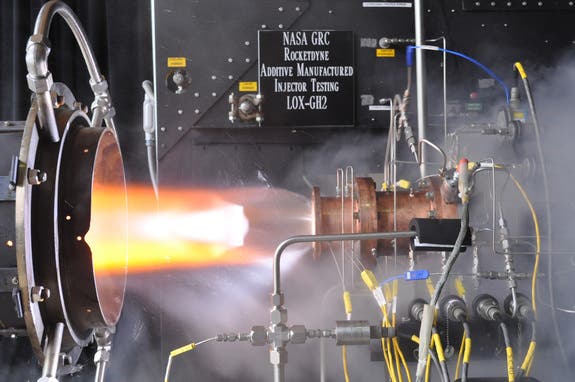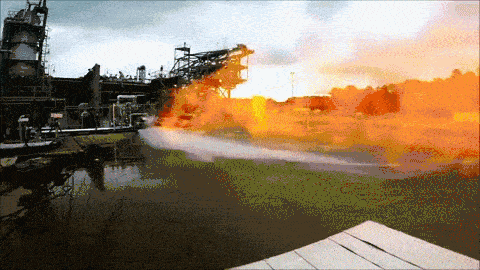Over the last three years, NASA engineers have been exploring using additive technology, like 3D printing, to manufacture key rocket engine parts. Tests on individual parts had worked well. Now, the space agency fitted all the parts onto a special test bench that behaves like a real rocket engine and fired it up for a test. The engine fired at 90,000 RPMs for 10 seconds to produce 22,000 pounds of thrust, with all performance test parameters showing ‘green’.

Credit: NASA Glenn Research Center
Printing a rocket engine
Additive tech is considered a key technology in the future for space flight. When done right, it makes parts sturdier, while significantly reducing production costs and time. Some of the most important components 3-D printed at NASA include injectors and a turbopump. The complex turbopump had 45 percent fewer parts than those made with traditional welding and assembly techniques., while the injector had 200 fewer parts. Moreover, these components have unique features otherwise impossible to make using traditional manufacturing techniques. Valves that usually a ready in a year were made by NASA in a couple of months.
We manufactured and then tested about 75 percent of the parts needed to build a 3-D printed rocket engine,” said Elizabeth Robertson, the project manager for the additively manufactured demonstrator engine at NASA’s Marshall Space Flight Center in Huntsville, Alabama. “By testing the turbopumps, injectors and valves together, we’ve shown that it would be possible to build a 3-D printed engine for multiple purposes such as landers, in-space propulsion or rocket engine upper stages.”

Credits: NASA/MSFC/Emmett Given
Of course, NASA used a highly specialized printer for metal works that builds each part by layering metal powder and fusing it together with a laser. Each 3-D printed engine part was then fitted together in a configuration that emulates a real engine.
“In engineering lingo, this is called a breadboard engine,” explained Nick Case, the testing lead for the effort. “What matters is that the parts work the same way as they do in a conventional engine and perform under the extreme temperatures and pressures found inside a rocket engine.
The NASA engineers fired the engine with cryogenic liquid hydrogen and oxygen, but they plan on using liquid oxygen and methane. These propellants can be made directly on-site on Mars, so there’s a great interest.
“These NASA tests drive down the costs and risks associated with using additive manufacturing, which is a relatively new process for making aerospace quality parts,” said Robertson. “Vendors who had never worked with NASA learned how to make parts robust enough for rocket engines. What we’ve learned through this project can now be shared with American companies and our partners.”
“This new manufacturing process really opened the design space and allowed for part geometries that would be impossible with traditional machining or casting methods,” said David Eddleman, one Marshall’s propulsion designers. “For the valve designs on this engine, we used more efficient structures in the piece parts that resulted in optimized performance.”







